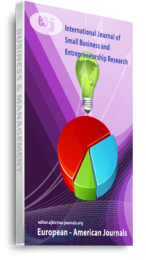Ethiopian leather development strategy has put the shoe industry on the forefront position to accelerate the development of the sector. The study focuses on the assessment of market practices and organizational competitiveness of Sheba leather industry. The main purpose is to find the factors that allow and prevent the company from coping up with competitive pressures and to find out the competitive advantages enjoyed and disadvantages faced by the company. A concept of competitiveness and parameters for measuring it has been discussed. The porter diamond model has been chosen to analyse the company’s competitiveness. As source of data four department managers and the general and deputy manager of the company were contacted by the researcher. The result depicts the low level competitiveness of the company. All determinants of competitiveness (factor conditions, home demand condition, related and supporting industries, and firm strategy, structure and rivalry) are found to be insignificant with the exception of natural resource endowment of the country in hides and skins and low labour cost availability. Lack of strong existence of related and supporting industries and factor conditions like scarcity of skilled labour, unavailability of raw materials (chemicals and shoe accessories) are the factors that limit the company from utilizing its cost advantage in raw hides and skins and sustaining its market share on domestic and international market. The study forwarded the diversification of the company’s product destination into large bases and the establishment of distribution outlets in different part of the country to base the company’s market on strong domestic demand.
Keywords: Competitive Advantage, Competitiveness, porter diamond model

